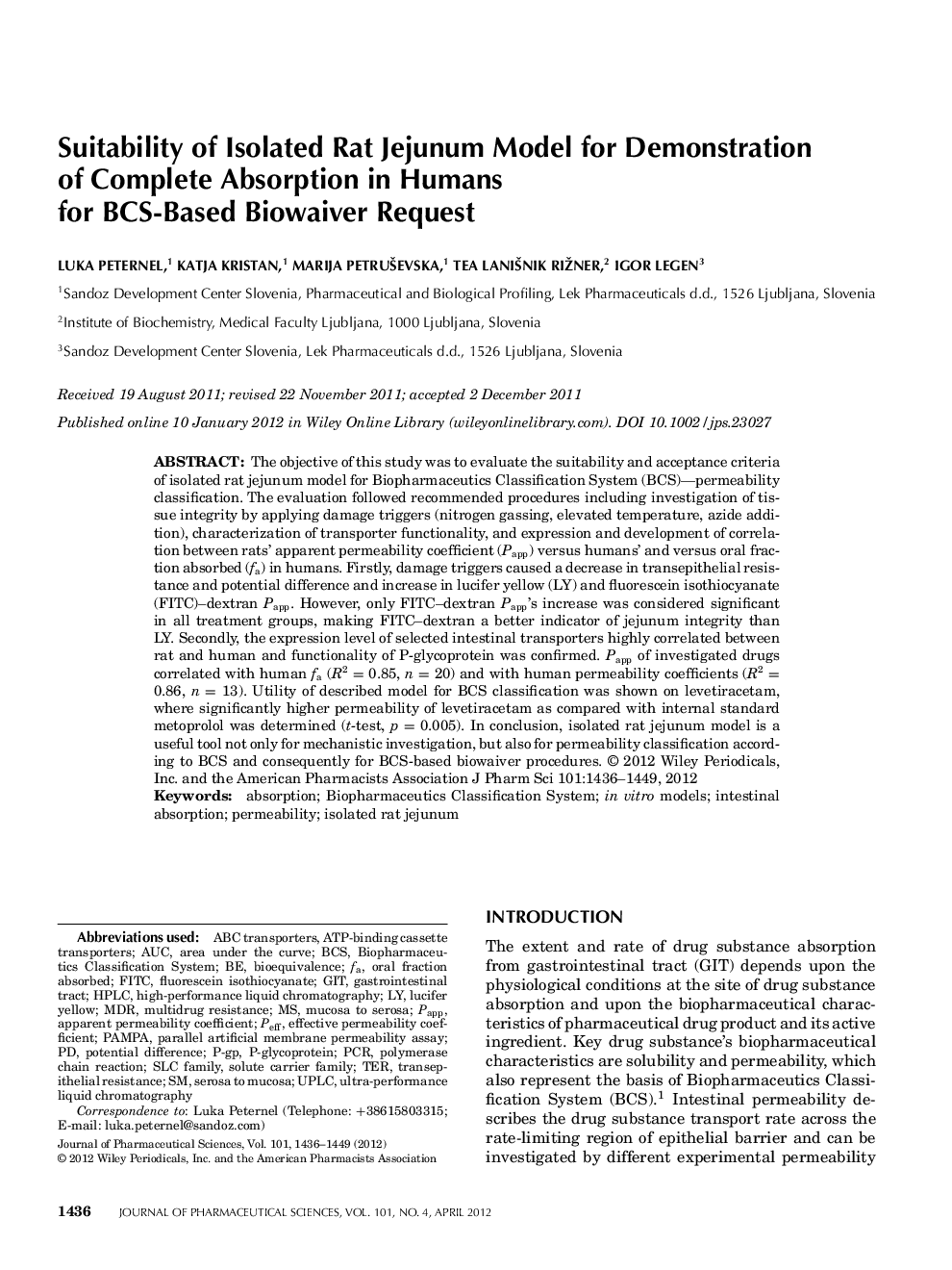| Article ID | Journal | Published Year | Pages | File Type |
|---|---|---|---|---|
| 2485845 | Journal of Pharmaceutical Sciences | 2012 | 14 Pages |
Abstract
The objective of this study was to evaluate the suitability and acceptance criteria of isolated rat jejunum model for Biopharmaceutics Classification System (BCS)-permeability classification. The evaluation followed recommended procedures including investigation of tissue integrity by applying damage triggers (nitrogen gassing, elevated temperature, azide addition), characterization of transporter functionality, and expression and development of correlation between rats' apparent permeability coefficient (Papp) versus humans' and versus oral fraction absorbed (fa) in humans. Firstly, damage triggers caused a decrease in transepithelial resistance and potential difference and increase in lucifer yellow (LY) and fluorescein isothiocyanate (FITC)-dextran Papp. However, only FITC-dextran Papp's increase was considered significant in all treatment groups, making FITC-dextran a better indicator of jejunum integrity than LY. Secondly, the expression level of selected intestinal transporters highly correlated between rat and human and functionality of P-glycoprotein was confirmed. Papp of investigated drugs correlated with human fa (R2 = 0.85, n = 20) and with human permeability coefficients (R2 = 0.86, n = 13). Utility of described model for BCS classification was shown on levetiracetam, where significantly higher permeability of levetiracetam as compared with internal standard metoprolol was determined (t-test, p = 0.005). In conclusion, isolated rat jejunum model is a useful tool not only for mechanistic investigation, but also for permeability classification according to BCS and consequently for BCS-based biowaiver procedures.
Keywords
Related Topics
Health Sciences
Pharmacology, Toxicology and Pharmaceutical Science
Drug Discovery
Authors
Luka Peternel, Katja Kristan, Marija Petruševska, Tea Lanišnik Rižner, Igor Legen,
